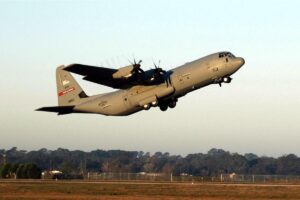ARINC-429 to 1553 Protocol Conversion Made Easy
Abstract
This white paper explores the challenges and solutions associated with converting ARINC-429 data to MIL-STD-1553 in avionics systems. Highlighting the need for seamless data communication between protocols, it introduces advanced conversion technologies designed to simplify integration while maintaining system reliability and efficiency. The paper serves as a guide for engineers and system integrators looking to enhance avionics interoperability.
Introduction
Modern avionics systems require efficient communication between diverse protocols. ARINC-429 and MIL-STD-1553, two of the most widely used communication standards, are often employed together to support both commercial and military aviation systems. However, their differences in architecture and data transmission create challenges in achieving seamless integration.
This white paper discusses the need for protocol conversion, the technical complexities involved, and the innovative solutions available to address these challenges.
ARINC-429 Overview
1.1 What is ARINC-429?
ARINC-429 is a unidirectional communication protocol commonly used in commercial aviation. It was developed to provide a simple, reliable means of transmitting avionics data across systems.
1.2 Key Features
- Unidirectional Data Flow: One transmitter communicates with multiple receivers.
- Data Format: 32-bit word structure divided into labels, source identifiers, data, and parity.
- Standardized Labels: Predefined for consistent system communication.
- Error Detection: Incorporates parity bits for error-checking.
1.3 Applications
- Flight management systems.
- Cockpit displays.
- Cabin management systems.
MIL-STD-1553 Overview
2.1 What is MIL-STD-1553?
MIL-STD-1553 is a military standard designed for robust and reliable data communication in mission-critical systems. It features a dual-redundant architecture and a time-multiplexed bus structure.
2.2 Key Features
- Bidirectional Communication: Enables data exchange between multiple devices.
- Data Format: Command, status, and data words with error-checking.
- Dual-Redundant Architecture: Ensures fault tolerance and high reliability.
- Real-Time Operation: Optimized for time-critical data.
2.3 Applications
- Military aircraft systems.
- Space exploration.
- Integrated combat platforms.
Why Protocol Conversion is Necessary
3.1 Interoperability Challenges
Commercial and military systems often coexist within a single aircraft. ARINC-429 and MIL-STD-1553 protocols, designed for different operational needs, must exchange data seamlessly to ensure system-wide functionality.
3.2 Benefits of Conversion
- Enhanced Compatibility: Allows diverse systems to communicate.
- Improved Efficiency: Reduces the complexity of multi-protocol systems.
- Future-Proofing: Facilitates integration with newer technologies.
Technical Challenges in Protocol Conversion
4.1 Differences in Architecture
- ARINC-429: Unidirectional, point-to-point communication.
- MIL-STD-1553: Bidirectional, bus-oriented communication.
4.2 Data Rate Disparities
- ARINC-429: Operates at fixed rates of 12.5 or 100 kbps.
- MIL-STD-1553: Operates at up to 1 Mbps.
4.3 Data Mapping
Aligning the 32-bit ARINC-429 word structure with MIL-STD-1553’s command-response architecture requires meticulous mapping to ensure data integrity.
4.4 Timing and Synchronization
Ensuring real-time communication between protocols with differing operational speeds presents a significant challenge.
Solutions for ARINC-429 to 1553 Protocol Conversion
5.1 Hardware Converters
Hardware-based protocol converters are designed to perform real-time data translation with minimal latency. They are ideal for mission-critical applications requiring high reliability.
Features
- Real-time performance.
- Compact and rugged design.
- Built-in error-checking mechanisms.
Benefits
- Reduced latency.
- High reliability in extreme conditions.
- Easy integration into existing systems.
5.2 Software Converters
Software-based solutions offer flexibility for non-critical applications where performance demands are lower. They are typically implemented in systems with embedded computing resources.
Features
- Flexible configurations.
- Cost-effective implementation.
- Suitable for systems with existing computational resources.
Benefits
- Lower upfront costs.
- Adaptable to evolving system requirements.
5.3 Hybrid Solutions
Combining hardware and software approaches, hybrid converters leverage the strengths of both methods to provide optimized performance and flexibility.
Key Considerations for Choosing a Conversion Solution
6.1 Application Environment
Evaluate whether the system operates in a commercial or military context, as this impacts the performance and reliability requirements.
6.2 Real-Time Requirements
For mission-critical systems, prioritize hardware converters with minimal latency.
6.3 Scalability
Choose solutions that allow for system expansion and integration with emerging technologies.
6.4 Budget Constraints
Balance performance and cost by selecting the appropriate combination of hardware and software solutions.
Future Trends in Protocol Conversion
7.1 Advancements in Converter Technology
- AI Integration: Enhances real-time data mapping and error detection.
- IoT-Enabled Systems: Facilitates remote monitoring and control.
7.2 Standardization Efforts
Industry efforts to harmonize ARINC-429 and MIL-STD-1553 standards aim to simplify future integrations and reduce conversion complexity.
7.3 High-Speed Alternatives
Emerging protocols, such as ARINC-664 and advanced MIL standards, offer higher data rates and improved scalability, potentially reducing the need for legacy protocol conversion.
Case Studies
8.1 Military Avionics System Integration
A leading defense contractor implemented hardware-based ARINC-429 to MIL-STD-1553 converters to integrate commercial navigation systems into military aircraft. The solution achieved seamless communication with minimal latency, enhancing mission readiness.
8.2 Commercial Aircraft Retrofits
An aerospace engineering firm utilized software-based solutions to retrofit aging commercial aircraft with MIL-STD-1553-compatible systems. The cost-effective approach extended the operational life of the fleet while maintaining compliance with modern standards.
Conclusion
ARINC-429 to MIL-STD-1553 protocol conversion is a critical component of modern avionics system integration. By understanding the technical challenges and leveraging advanced conversion solutions, engineers can achieve seamless interoperability, ensuring the reliability and efficiency of avionics systems. As technology continues to evolve, future trends will further simplify protocol conversion, paving the way for more integrated and capable aerospace systems.





